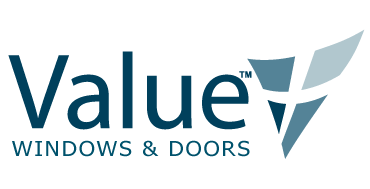All LoE coated glass used by Value Windows and Doors conforms to the following ASTM Standards
Documents Referenced
- ASTM C 1036-06 (Standard Specification for Flat Glass) Q3/Glazing Select
- ASTM C 1048-04 (Standard Specification for Heat-Treated Flat Glass)
- ASTM C 1376-03 (Standard Specification for Pyrolytic and Vacuum Deposition Coatings on Flat Glass) Kind CV specification.
Surface Imperfections
All inspections are done with the viewing angle at 90 degrees to the glass surface, uniform diffused lighting that stimulates daylight, and with the inspector looking thru rather than at the glass surface. Architectural glass that is produced as annealed, tempered, non Low-E insulated, or laminated
Bubbles, Pits, Knots, and Dirt
With the inspector standing 39″ from the glass surface, and glass thickness is ¼” or less, bubbles, pits, knots, or dirt is allowed if the average of blemish’s length and width is 1/16″ or less. Blemishes with an average length and width of 3/32″ are allowed if they are separated from a similar blemish by at least 24″. Bubbles, pits, knots, and dirt are not allowed if their average length and width exceeds 3/32.”
Edge Chips
DEPTH- measuring from the face of the glass a chip is allowed if it’s depth does not exceed more than 50% of the glass thickness WIDTH- measuring the perpendicular distance from the edge of the glass to the inner edge of the chip, a chip is allowed up to half of the glass thickness or ¼”, whichever is greater; for mirrors up to half of the mirror thickness or 1/16″, whichever is greater. LENGTH- measuring parallel from the edge of the glass to the edge of a chip, a chip is allowed if its length does not exceed two times its width. Architectural glass coated using a hard or soft coat low-E process. The factors inherent in the heat treating process may change the surface of the treated glass and result in a distortion of reflected objects when viewed on the glass surface. The ability of the viewer to see this distortion is dependent on the size and shape of the glass, the location that the glass is glazed on the building, and the distance the viewer stands from the glass surface. Reflective coated glass as well as the expansion and contraction of the air space between the glass surfaces of an insulated unit can also enhance this distortion. These are not considered defects and are not cause for rejection.
Maximum Bow and Warp Tolerances
Scratches and Rubs
The inspector begins the inspection by standing at a distance of 120″ from the glass surface. The inspector then moves closer to the glass surface, stopping at the point where the scratch or rub is first detected. If the scratch or rub is visible at a distance of 120″, is over 3″ long, and is located in the central viewing area (defined as 80% of the length and 80% of the width dimensions centered on the lite of glass) then it is cause for rejection.
Coating Pinholes
Coating pinholes greater than 1/16″ of an inch are not allowed. Pinholes less than 1/16″ in diameter are allowed if they are located outside of the central viewing area. At a distance of 120″ from the glass surface, three or more pinholes greater than 3/64″ in size are not allowed if they are located within a 6″ diameter cluster of one another.
Coloration
Low-e coated glass may exhibit a hue or coloration that is not apparent in architectural samples, especially in shaded or darkened light or when viewed at a glancing angle. This coloration is inherent to the coating process and is not a reason for rejection.
*The previous information is copyrighted and is available at http://www.astm.org/
